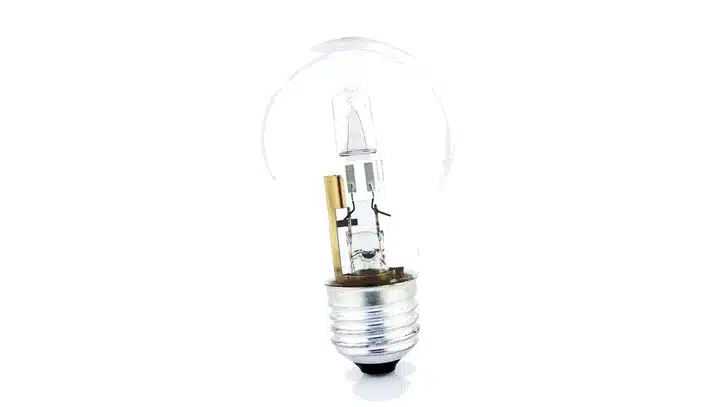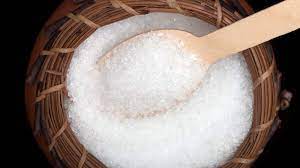In the hustle of our daily lives, a kitchen companion like a rice cooker is a silent hero. Ever wondered about the wizardry that happens inside this seemingly simple appliance?
Let’s dive into the mechanics and unveil the magic behind how a rice cooker works and the science behind fluffy grains.
Table of contents
What is a Rice Cooker?
A rice cooker, also known as a rice steamer, is a kitchen appliance designed to automate and simplify the process of cooking rice. It’s a specialized appliance that ensures perfectly cooked rice with minimal effort from the user.
Why Do You Need a Rice Cooker?
The primary purpose of a rice cooker is to streamline the cooking of rice. Cooking rice on the stovetop requires attention to timing, heat, and water levels, which can be challenging for some people.
A rice cooker eliminates the need for constant monitoring and guesswork, making it easier for individuals to achieve consistently well-cooked rice.
It’s a convenient and time-saving device, especially for those who frequently include rice in their meals.
Read this: How Can I Get A Diploma In Culinary Arts ? Schools, Cost, Salary, Career
What are the Basic Concepts of a Rice Cooker?
Here are the basic concepts of a rice cooker
- Automatic Operation: Rice cookers typically operate in an automatic mode. Once the rice and water are added, the cooker detects when the rice has absorbed enough water and reached the desired doneness. It then switches from the cooking mode to a warming mode to keep the rice at an optimal serving temperature.
- Heat Regulation: Rice cookers use an internal heating element to bring the water to a boil and maintain a controlled simmer. The heat is usually regulated by a thermostat, ensuring that the rice cooks evenly without burning.
- Steam Cooking: Rice cookers employ the principles of steam cooking. As the water in the cooker reaches a boil, it creates steam. The steam circulates through the rice, cooking it thoroughly. This method is efficient in producing evenly cooked rice without the risk of sticking or burning.
- Measuring and Ratios: Many rice cookers come with a measuring cup and graduated markings on the inner pot. Users are instructed to add a specific amount of rice and water, following a recommended ratio. This helps in achieving the right balance for perfectly cooked rice.
- Warming Function: Once the rice is cooked, the rice cooker automatically switches to a warming mode. This keeps the rice at an optimal temperature for an extended period, allowing users to serve hot rice whenever they are ready to eat.
Different Types of Rice Cookers:
#1. Basic Rice Cookers:
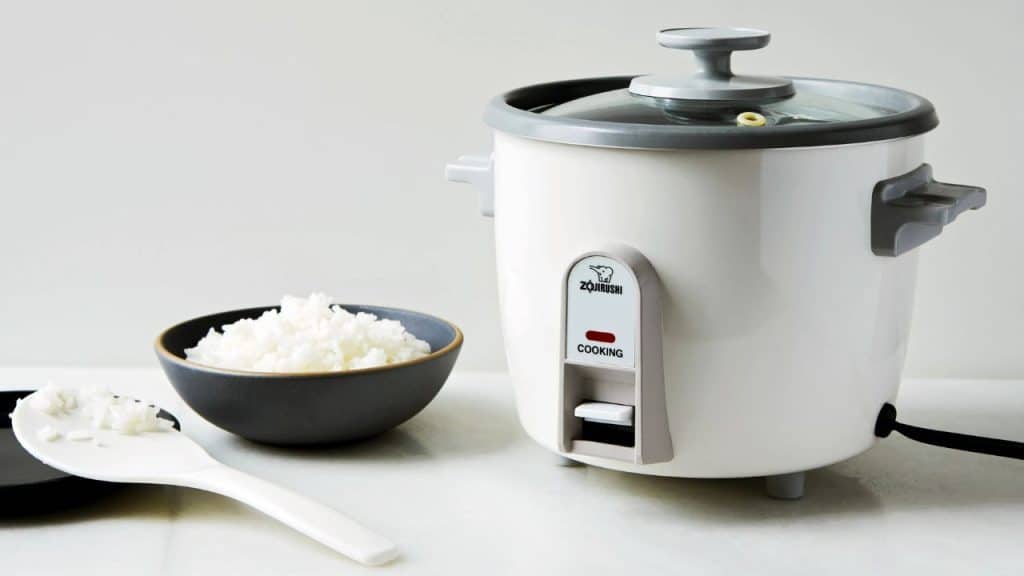
These are simple, budget-friendly models with a single button for cooking. Also, they typically have an auto-shutoff feature when the rice is done.
#2. Fuzzy Logic Rice Cookers:
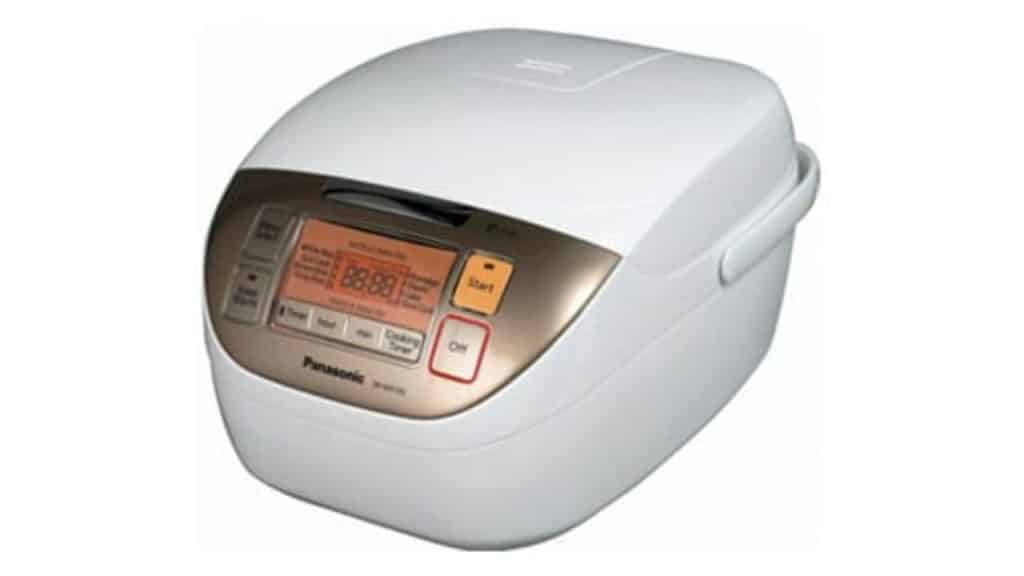
This rice cooker is equipped with advanced technology, these rice cookers adjust cooking time and temperature based on the type of rice being cooked. Also, they offer more precise control, making them suitable for a variety of rice types.
#3. Induction Heating Rice Cookers:
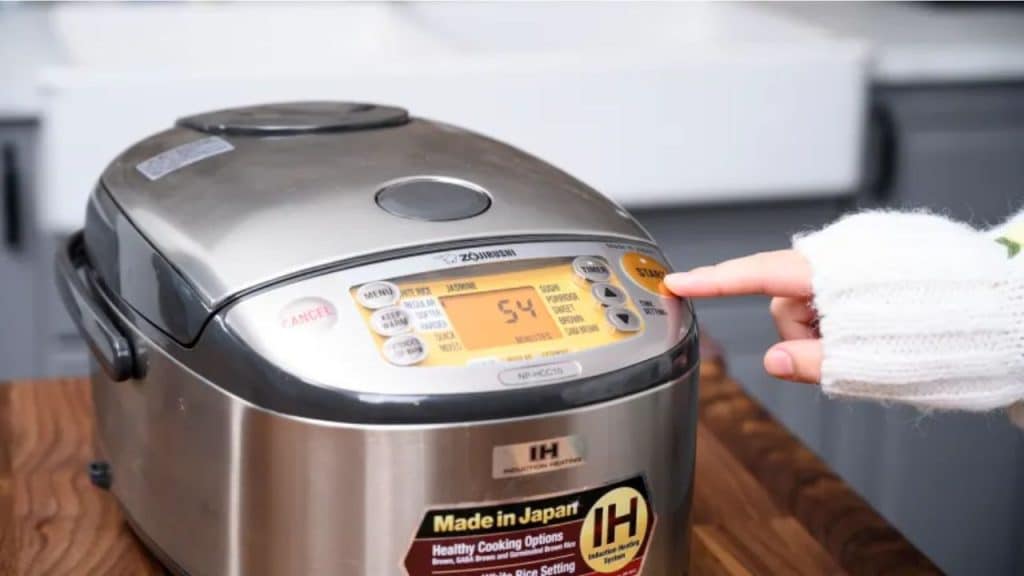
These use electromagnetic fields to create heat, ensuring even cooking. They are known for their efficiency and ability to handle different rice varieties.
#4. Pressure Cooker Rice Cookers:
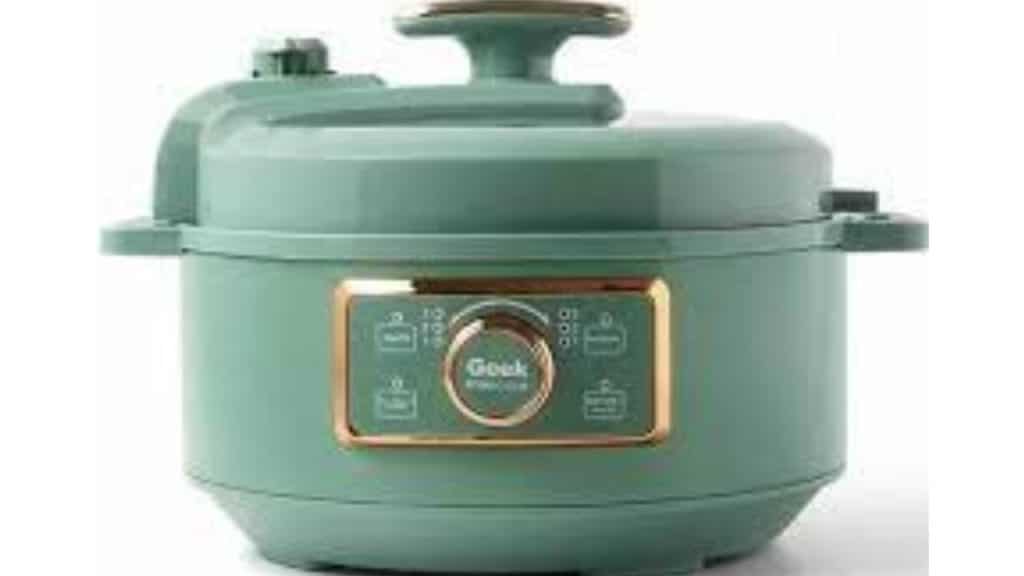
Combining the functions of a pressure cooker and a rice cooker, they cook rice faster by increasing pressure inside the cooking chamber.
#5. Multi-Functional Rice Cookers:

These can handle more than just rice; they often have settings for steaming, sautéing, and slow cooking.
Also, read this: 25 Best Cookbooks for College Students | Best
How Does Rice Cooker Work?
Here’s a basic explanation of how a typical rice cooker works:
- Water Measurement: The first step is to measure the desired amount of rice and water. The rice-to-water ratio is crucial for achieving the right texture. This ratio can vary depending on the type of rice being used.
- Inner Pot: The rice and water are placed in the inner pot of the rice cooker. The inner pot is usually removable and has markings indicating the water levels for different types of rice.
- Heating Element: The rice cooker has a heating element located beneath the inner pot. This element is responsible for heating the water and rice to cook the rice.
- Thermostat and Sensor: Most rice cookers have a built-in thermostat and sensor. The thermostat regulates the temperature of the heating element, while the sensor monitors the temperature inside the cooker.
- Cooking Cycle: When you turn on the rice cooker, the heating element starts to heat the water. As the water reaches a boiling point, it begins to be absorbed by the rice. The temperature is then regulated to keep the rice simmering until it’s cooked.
- Thermal Sensor: Once the rice absorbs all the water and reaches a certain temperature, the thermal sensor detects the change and triggers the cooker to switch from the cooking mode to the “keep warm” mode.
- Keep Warm Mode: The “keep warm” mode maintains a lower temperature, preventing the rice from overcooking or sticking to the bottom of the pot. This feature is especially useful if you’re not ready to serve the rice immediately.
- Indicator Lights: Many rice cookers have indicator lights that show whether the cooker is in the cooking or “keep warm” mode.
Should You Rinse Rice?
Rinsing rice before cooking is a matter of preference and the type of rice being used. Here are some considerations:
- White Rice: Rinsing removes excess starch, resulting in fluffier rice. However, some prefer not to rinse as it can wash away nutrients.
- Brown Rice: Rinsing is recommended to remove surface impurities and improve the texture.
- Sushi Rice: Rinse thoroughly to remove excess starch and achieve the desired sticky texture.
You can check this: How to Get Mold Out of Clothes | Full Guide
How Much Water for 1 Cup of Rice?
The water-to-rice ratio can vary slightly based on the type of rice and personal preference. However, a general guideline for white rice is typically 1.5 to 2 cups of water per cup of rice.
Brown rice may require a bit more water, around 2 to 2.5 cups. Always check the specific instructions for your rice cooker and the type of rice you are using.
Rice Cooker Ratio
The rice-to-water ratio is a crucial factor in achieving perfectly cooked rice in a rice cooker. The standard ratio for most white rice varieties is 1:2, meaning one part rice to two parts water. However, this ratio may vary slightly depending on the type of rice and personal preferences. For example:
- White Rice (long-grain): 1 cup rice to 2 cups water
- Brown Rice: 1 cup rice to 2.5 to 3 cups water
- Basmati or Jasmine Rice: 1 cup rice to 1.5 to 2 cups water
It’s essential to follow the manufacturer’s instructions for your specific rice cooker, as some models may have variations in cooking times and water requirements.
How Long Does a Rice Cooker Take to Cook?
The cooking time for rice in a rice cooker typically ranges from 15 to 30 minutes, depending on the type of rice and the specific model of the cooker. White rice generally cooks faster than brown rice.
Once the rice cooker completes its cycle, it will usually switch to a “keep warm” mode, maintaining the rice at an optimal temperature until you’re ready to serve.
Also, check this: How Does Electric Toasters Work | Best Working Conditions
Benefits of Rice Cookers
rice cookers provide a convenient and efficient way to consistently prepare perfectly cooked rice, making them a valuable addition to many kitchens. Therefore, here are the benefits of rice cooker:
- Convenience: Rice cookers automate the cooking process, allowing you to simply add rice and water and let the appliance take care of the rest. This convenience is particularly valuable for busy individuals or those with limited cooking experience.
- Consistent Results: Rice cookers are designed to consistently produce well-cooked rice without the need for constant monitoring. The built-in sensors and timers ensure that the rice is cooked to perfection each time.
- Time and Energy Efficiency: Rice cookers save time and energy compared to traditional stovetop methods. Once the rice and water are added, you can focus on other tasks without worrying about the rice boiling over or burning.
- Versatility: Some advanced rice cookers offer multiple cooking settings for different types of rice, as well as the ability to steam vegetables or prepare other grains. This versatility adds to the overall value of the appliance.
- Keep Warm Feature: Many rice cookers have a “keep warm” function that kicks in after cooking. This feature keeps the rice at an ideal serving temperature for an extended period, allowing flexibility in meal timing.
- Easy to Clean: The removable inner pot and non-stick surfaces in many rice cookers make them easy to clean. This convenience adds to the overall user-friendly nature of these appliances.
How to Maintain Your Rice Cooker
Maintaining your rice cooker is essential to ensure it functions properly and lasts for a long time. Here are some tips on how to maintain your rice cooker:
- Read the Manual: Always start by reading the user manual that comes with your rice cooker. It provides specific instructions and guidelines for cleaning and maintenance.
- Regular Cleaning: After each use, make sure to unplug the rice cooker and allow it to cool before cleaning. Wipe down the exterior with a damp cloth and clean the inner pot, lid, and any accessories according to the manufacturer’s instructions. Some rice cookers have dishwasher-safe parts, but others may require hand washing.
- Remove Residue: Check for any food residue or starch buildup on the heating plate or the bottom of the inner pot. Use a soft sponge or cloth to wipe away any residue. For stubborn stains, a mixture of vinegar and water can be effective.
- Descale the Rice Cooker: If your rice cooker has a heating element, it may accumulate mineral deposits over time. To descale, mix equal parts water and vinegar, fill the inner pot, and run a cooking cycle without rice. Afterward, rinse thoroughly with water.
More Information on Maintenance
- Inspect the Seals and Gaskets: Inspect the rubber seals and gaskets for wear and tear. If you notice any damage, replace them to ensure a proper seal during cooking.
- Vent Maintenance: Some rice cookers have vents to release steam during cooking. Check the vent for any blockages and clean it if necessary. A blocked vent can affect the cooker’s performance.
- Store Properly: When not in use, store your rice cooker in a cool, dry place. Avoid storing it with the lid closed to prevent moisture buildup.
- Avoid Abrasive Cleaners: Do not use abrasive cleaners or scouring pads on the non-stick surface of the inner pot, as they can damage the coating. Use mild dish soap and a soft sponge or cloth instead.
- Handle with Care: Be gentle when handling the inner pot and other components to avoid scratching or denting. Avoid using metal utensils that could damage the non-stick coating.
- Regular Inspections: Periodically check all parts of the rice cooker for signs of wear, damage, or malfunction. If you notice any issues, refer to the user manual or contact the manufacturer for guidance.
See also: How Does a Water Heaters Work?
FAQs: How does a rice cooker work
The time varies, but on average, it takes around 15-20 minutes for most rice cookers to work their magic.
Absolutely! Many rice cookers have settings for different grains, expanding their versatility beyond rice.
Most rice cookers come with removable, dishwasher-safe components, making cleanup a breeze.
Ensure you’re using the right water-to-rice ratio, and consider letting the rice sit for a few minutes after cooking to prevent sticking.
Yes, you can! Add spices, broth, or even coconut milk to infuse your rice with delightful flavors during the cooking process.
Compared to stovetop cooking, rice cookers are generally energy-efficient, thanks to their precise temperature control.
Conclusion
The simplicity and efficiency of rice cookers make them a kitchen staple. From their basic components to advanced features, understanding how a rice cooker works empowers users to make the most out of this essential appliance.


